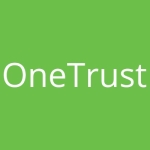What is our primary use case?
My team primarily uses AuditBoard for SOX compliance. Our main function is to test and document our various systems of risk and controls. In addition, our internal audit team has also started using the platform. However, I am not familiar with the specifics of their usage of the solution. We also list our general IT controls within AuditBoard. I am trying to recall if there are any other platforms we use within AuditBoard since our primary focus is on SOX compliance.
How has it helped my organization?
The reporting tool within AuditBoard is probably the one that I use the most. It is built based on the data points that we, at our company, have put into it in terms of different data points that we collect in our documentation and testing. So, it does a good job of pulling information from all of our documentation. So, it is mainly used for reporting purposes.
An example of the benefits we have experienced from working with AuditBoard is that, as we approach the end of our second cycle utilizing AuditBoard's archival and roll forward process, we have been able to maintain our documentation year-over-year. This has allowed us to refer our previous year's documentation work in subsequent years. This feature has been extremely helpful for our team.
We have been able to build on this process from year one to year two. Now, as we enter year three with a doubled team size, new team members can refer to the prior year's testing documentation for reference as they begin to test the controls for the current year. So, the archive and roll forward process has been extremely beneficial.
What is most valuable?
The reporting tool is user-friendly and makes gathering the information I want easy. It's customizable every time I create a report, and I can also save reports as I work through them. I create weekly summaries, so I have various reports, including stock reports I've created for myself, that I can rerun whenever I want to quickly.
The reporting tool is very helpful in what I do, as it allows me to gather information to track progress and see anything outstanding. It also helps me inform various testers on what is happening at the current stage of progress, as we have seven people on our team. Overall, the reporting feature of this tool is very helpful.
What needs improvement?
A handful of things in the solution need to be improved. One of them is better communication of updates to the system or tool itself. Currently, we don't receive any emails about updates, and it's up to the users to find them on the community page of AuditBoard. It would be helpful if we received more direct communication about upcoming changes so we could stay informed.
One thing that we, as a team, have noticed is that as we review documentation, there's a comments piece within the actual control itself. We can leave comments as we are reviewing, but the comments don't allow us to pinpoint exactly where we are referencing when we are making a comment. So, for example, there are various sections within the documentation where there's data that's input. Still, if we want to call out a specific section, we have to spell it out ourselves in the comment rather than being able to pinpoint it directly. It's kind of like in Excel, where one can highlight the cell and leave a comment within the cell right there, but within AuditBoard, we have to specifically call out this section in our own words as we are typing the comment. It would be great if this could be improved.
I would like to see more inclusive tools available within the AuditBoard system. Currently, it is more like an "à la carte" basis, meaning that users have to add and subtract various different modules to the tool. For instance, there's a risk module that we would love to have, but it's an additional cost. Even though we are already super users, or whatever it's called, paying for the best access to the tool, some modules are still left out. So, it would be nice if the tool was more inclusive of their different modules. Besides that, it has been a very helpful tool for us.
For how long have I used the solution?
In my current role, we adopted AuditBoard approximately three months after our company went public in January 2021. Therefore, we began using AuditBoard around April 2021 and have been utilizing this platform for nearly two years. In our company, we are still using the solution.
What do I think about the stability of the solution?
For the most part, we have only experienced a few issues with AuditBoard. These issues were primarily due to a lack of communication about updates. In some cases, updates were made to the solution without informing us, which left us in the dark about the changes and how they might affect our work. However, I can count how many times this has happened on just one of my hands. Besides that, the product is very stable, and we haven't had many issues with the solution.
What do I think about the scalability of the solution?
The solution is scalable. Our current control framework is where it will be, and I don't anticipate it getting any larger. However, the tool itself seems to be very scalable.
In our company, if we look at the users and roles currently listed in our tool, we have a total of 265. However, some of these may be owners of controls or involved in the documentation process and may not actually be actively using the tool itself. So, if we want to get a more accurate number of people who are actually using the tool, I would estimate it to be closer to 250.
How are customer service and support?
We have contacted technical support on multiple occasions for general questions and inquiries. There is a tool available where we can use the chat function, which recommends articles for us to read in case our question has already been addressed. Alternatively, we can submit a ticket to a support representative who will investigate our issue or question and email us back with a solution or response.
In my experience, this process has been quite successful. However, there have been instances where some team members faced communication issues when changes were made to our system without us being informed. In such cases, when we reached out to the technical support team for answers, we had to wait for a response for up to a month. Nonetheless, such occurrences are rare.
Which solution did I use previously and why did I switch?
I have not used any other solutions similar to AuditBoard. AuditBoard is the tool we adopted when we went public, and we have been using it in our company ever since.
How was the initial setup?
I wasn't directly involved in the initial setup and deployment of the project. A smaller team with various leaders took care of the deployment process. I can't provide too much detail about the steps taken during the setup and deployment phase.
Also, we're not responsible for handling any maintenance tasks related to AuditBoard. The AuditBoard team themselves handles those tasks. Our involvement is limited to our day-to-day use of the software, specifically when we need to update our own testing documentation. However, when it comes to maintaining the program or software itself, we don't do anything outside of our normal activities.
What about the implementation team?
When we were deploying the solution, we decided to handle everything in-house. A former leader, who is no longer with the company, had helped with the deployment and initial setup of AuditBoard. He could do the solution's setup because he had used the software before in one of his previous jobs. So, he was the one who suggested that we use AuditBoard. Therefore, we didn't need help from a third party to assist us with the setup.
What was our ROI?
I don't have any specific figures or numbers regarding the return on investment from working with AuditBoard. Considering the solution's return on investment, it has been extremely helpful since we were doing a lot of documentation. Previously, in our company, we were using an Excel sheet which made things quite messy. However, with AuditBoard, we now have a repository of information in one location, making it easy to search for different things. Also, the reporting and dashboard features have been extremely helpful. Overall, I would say that the return on investment has been incredible.
Which other solutions did I evaluate?
We did not evaluate any other options before choosing AuditBoard. We heavily considered it based on a referral from a former employee who had used it in the past. So I think that AuditBoard was our clear favorite, based on the reference we received.
What other advice do I have?
Even though I don't know if this answers your question regarding the deployment model we use for the solution, AuditBoard is a software and a web-based tool. Usually, we access it by logging in through our web browser.
If you plan to use AuditBoard, contact your representative and establish clear and regular communication with them. When in our company, we started using AuditBoard, we waited about a year before setting up quarterly calls with our representative. This helped us to offer feedback and stay informed about any updates or changes to the platform. I recommend setting up this line of communication from the beginning so that you have someone to rely on for any questions you may have. Don't just rely on the ticket system or other means of communication. Establish a good relationship with your representative so that you can get the most out of your experience with AuditBoard. That's my one piece of advice.
Since the solution is not bad at all, and there is definitely room for improvement. Also, since, for us, at our company, it gets the job done, and we enjoy using it, I rate this solution an eight out of ten.
Disclosure: I am a real user, and this review is based on my own experience and opinions.











